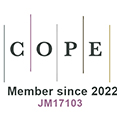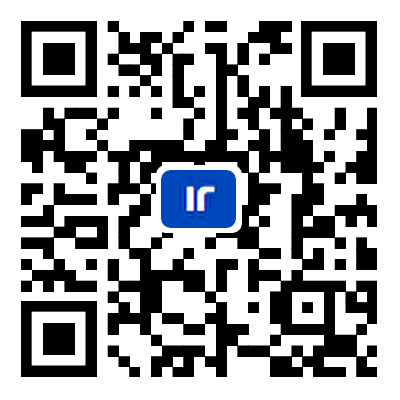REFERENCES
1. Thirunavukarasu AJ, Ting DSJ, Elangovan K, Gutierrez L, Tan TF, Ting DSW. Large language models in medicine. Nat Med 2023;29:1930-40.
2. Introducing ChatGPT; 2022. Available from: https://openai.com/blog/chatgpt. [Last accessed on 12 Dec 2024].
3. Agrawal M, Hegselmann S, Lang H, Kim Y, Sontag D. Large language models are few-shot clinical information extractors. In: Goldberg Y, Kozareva Z, Zhang Y, editors. Proceedings of the 2022 Conference on Empirical Methods in Natural Language Processing. Abu Dhabi, United Arab Emirates: Association for Computational Linguistics; 2022. pp. 1998–2022.
4. Ji S, Zhang T, Yang K, et al. Domain-specific continued pretraining of language models for capturing long context in mental health; 2023. Available from: https://arxiv.org/abs/2304.10447. [Last accessed on 12 Dec 2024].
5. Sheng B, Guan Z, Lim LL, et al. Large language models for diabetes care: potentials and prospects. Sci Bull 2024;69:583-88.
6. Devlin J, Chang MW, Lee K, Toutanova K. BERT: pre-training of deep bidirectional transformers for language understanding; 2019. Available from: https://arxiv.org/abs/1810.04805. [Last accessed on 12 Dec 2024].
7. Du Z, Qian Y, Liu X, et al. GLM: General language model pretraining with autoregressive blank infilling. In: Proceedings of the 60th Annual Meeting of the Association for Computational Linguistics (Volume 1: Long Papers). Dublin, Ireland: Association for Computational Linguistics; 2022. pp. 320–35.
8. OpenAI, Achiam J, Adler S, et al. GPT-4 technical report; 2024. Available from: https://arxiv.org/abs/2303.08774. [Last accessed on 12 Dec 2024].
9. Brown T, Mann B, Ryder N, et al. Language models are few-shot learners. In: Larochelle H, Ranzato M, Hadsell R, Balcan MF, Lin H, editors. Advances in Neural Information Processing Systems. vol. 33. Curran Associates, Inc.; 2020. pp. 1877–901. Available from: https://proceedings.neurips.cc/paper_files/paper/2020/file/1457c0d6bfcb4967418bfb8ac142f64a-Paper.pdf. [Last accessed on 12 Dec 2024].
10. Lewis M, Liu Y, Goyal N, et al. BART: Denoising sequence-to-sequence pre-training for natural language generation, translation, and comprehension. In: Jurafsky D, Chai J, Schluter N, Tetreault J, editors. Proceedings of the 58th Annual Meeting of the Association for Computational Linguistics. Online: Association for Computational Linguistics; 2020. pp. 7871–80.
11. Raffel C, Shazeer N, Roberts A, et al. Exploring the limits of transfer learning with a unified text-to-text transformer. J Mach Learn Res 2020;21: 1–67. Available from: http://jmlr.org/papers/v21/20-074.html.
12. Peng C, Yang X, Chen A, et al. study of generative large language model for medical research and healthcare. NPJ Digit Med 2023;6:210.
13. Yang X, Chen A, PourNejatian N, et al. A large language model for electronic health records. NPJ Digit Med 2022;5:194.
14. Alsentzer E, Murphy JR, Boag W, et al. Publicly available clinical bert embeddings; 2019. Available from: https://arxiv.org/abs/1904.03323. [Last accessed on 12 Dec 2024].
15. Chowdhery A, Narang S, Devlin J, et al. PaLM: Scaling language modeling with pathways; 2022. Available from: https://arxiv.org/abs/2204.02311. [Last accessed on 12 Dec 2024].
16. Gu Y, Tinn R, Cheng H, et al. Domain-specific language model pretraining for biomedical natural language processing. New York, NY, USA: Association for Computing Machinery; 2021.
17. Minaee S, Mikolov T, Nikzad N, et al. Large language models: a survey; 2024. Available from: https://arxiv.org/abs/2402.06196. [Last accessed on 12 Dec 2024].
18. Singhal K, Tu T, Gottweis J, et al. Towards expert-level medical question answering with large language models; 2023. Available from: https://arxiv.org/abs/2305.09617. [Last accessed on 12 Dec 2024].
19. Han T, Adams LC, Papaioannou JM, et al. MedAlpaca – An open-source collection of medical conversational AI models and training data; 2023. Available from: https://arxiv.org/abs/2304.08247. [Last accessed on 12 Dec 2024].
20. Toma A, Lawler PR, Ba J, et al. Clinical camel: an open expert-level medical language model with dialogue-based knowledge encoding; 2023. Available from: https://arxiv.org/abs/2305.12031. [Last accessed on 12 Dec 2024].
21. He K, Mao R, Lin Q, et al. A survey of large language models for healthcare: from data, technology, and applications to accountability and ethics; 2024. Available from: https://arxiv.org/abs/2310.05694. [Last accessed on 12 Dec 2024].
22. Liang P, Bommasani R, Lee T, et al. Holistic evaluation of language models; 2023. Available from: https://arxiv.org/abs/2211.09110. [Last accessed on 12 Dec 2024].
23. Tao Z, Jin Z, Bai X, et al. EvEval: A comprehensive evaluation of event semantics for large language models; 2023. Available from: https://arxiv.org/abs/2305.15268. [Last accessed on 12 Dec 2024].
24. Bai Y, Ying J, Cao Y, et al. Benchmarking foundation models with language-model-as-an-examiner. In: Oh A, Naumann T, Globerson A, et al., editors. Advances in Neural Information Processing Systems. vol. 36. Curran Associates, Inc.; 2023. pp. 78142–67. Available from: https://proceedings.neurips.cc/paper_files/paper/2023/file/f64e55d03e2fe61aa4114e49cb654acb-Paper-Datasets_and_Benchmarks.pdf. [Last accessed on 12 Dec 2024].
25. Wang B, Chen W, Pei H, et al. DecodingTrust: a comprehensive assessment of trustworthiness in GPT models; 2024. Available from: https://arxiv.org/abs/2306.11698. [Last accessed on 12 Dec 2024].
26. Chervenak J, Lieman H, Blanco-Breindel M, Jindal S. The promise and peril of using a large language model to obtain clinical information: ChatGPT performs strongly as a fertility counseling tool with limitations. Fertil Steril 2023;120:575-83.
27. Gilson A, Safranek CW, Huang T, et al. How does ChatGPT perform on the united states medical licensing examination (usmle)? the implications of large language models for medical education and knowledge assessment. JMIR Med Educ 2023;9:e45312.
28. Cascella M, Montomoli J, Bellini V, Bignami E. Evaluating the feasibility of ChatGPT in healthcare: an analysis of multiple clinical and research scenarios. J Med Syst 2023;47:33.
29. Chang Y, Wang X, Wang J, et al. A Survey on Evaluation of Large Language Models. ACM Trans Intell Syst Technol 2024;15.
30. Wu J, Liu X, Li M, et al. Clinical Text Datasets for Medical Artificial Intelligence and Large Language Models — A Systematic Review. NEJM AI 2024;1:AIra2400012.
31. Johnson AE, Pollard TJ, Shen L, et al. MIMIC-III, a freely accessible critical care database. Sci Data 2016;3:1-9.
32. Johnson AE, Bulgarelli L, Shen L, et al. MIMIC-IV, a freely accessible electronic health record dataset. Sci Data 2023;10:1.
33. Herrett E, Gallagher AM, Bhaskaran K, et al. Data resource profile: clinical practice research datalink (CPRD). Int J Epidemiol 2015;44:827-36.
34. PubMed data; 2023. Available from: https://pubmed.ncbi.nlm.nih.gov/download/. [Last accessed on 12 Dec 2024].
35. PMC; 2024. Available from: https://www.ncbi.nlm.nih.gov/pmc/. [Last accessed on 12 Dec 2024].
36. Wallace BC, Saha S, Soboczenski F, Marshall IJ. Generating (factual?) narrative summaries of rcts: experiments with neural multi-document summarization. AMIA Jt Summits Transl Sci Proc 2021;2021: 605-14. Available from: https://pmc.ncbi.nlm.nih.gov/articles/PMC8378607/. [Last accessed on 12 Dec 2024]34457176.
37. DeYoung J, Beltagy I, van Zuylen M, Kuehl B, Wang LL. MS. 2: multi-document summarization of medical studies. In: Proceedings of the 2021 Conference on Empirical Methods in Natural Language Processing. Online and Punta Cana, Dominican Republic: Association for Computational Linguistics; 2021. pp. 7494–513. Available from: https://aclanthology.org/2021.emnlp-main.594. [Last accessed on 12 Dec 2024].
38. Guo Y, Qiu W, Wang Y, Cohen T. Automated lay language summarization of biomedical scientific reviews; 2022. Available from: https://arxiv.org/abs/2012.12573. [Last accessed on 12 Dec 2024].
39. Gupta V, Bharti P, Nokhiz P, Karnick H. SumPubMed: Summarization dataset of PubMed scientific articles. In: Proceedings of the 59th Annual Meeting of the Association for Computational Linguistics and the 11th International Joint Conference on Natural Language Processing: Student Research Workshop; 2021. pp. 292–303.
40. Gao L, Biderman S, Black S, et al. The pile: an 800GB dataset of diverse text for language modeling; 2020. Available from: https://arxiv.org/abs/2101.00027. [Last accessed on 12 Dec 2024].
41. Lo K, Wang LL, Neumann M, Kinney R, Weld D. S2ORC: The semantic scholar open research corpus. In: Proceedings of the 58th Annual Meeting of the Association for Computational Linguistics. Online: Association for Computational Linguistics; 2020. pp. 4969–83.
42. Wang LL, Lo K, Chandrasekhar Y, et al. CORD-19: The COVID-19 Open Research Dataset. In: Proceedings of the 1st Workshop on NLP for COVID-19 at ACL 2020. Online: Association for Computational Linguistics; 2020. Available from: https://www.aclweb.org/anthology/2020.nlpcovid19-acl.1. [Last accessed on 12 Dec 2024].
43. Basaldella M, Liu F, Shareghi E, Collier N. COMETA: A corpus for medical entity linking in the social media. In: Proceedings of the 2020 Conference on Empirical Methods in Natural Language Processing (EMNLP). Online: Association for Computational Linguistics; 2020. pp. 3122–37. Available from: https://www.aclweb.org/anthology/2020.emnlp-main.253. [Last accessed on 12 Dec 2024].
44. Radford A, Wu J, Child R, et al. Language models are unsupervised multitask learners; 2019. Available from: https://api.semanticscholar.org/CorpusID:160025533. [Last accessed on 12 Dec 2024].
45. Gokaslan A, Cohen V. OpenWebText Corpus; 2019. Available from: http://Skylion007.github.io/OpenWebTextCorpus. [Last accessed on 12 Dec 2024].
46. Bodenreider O. The unified medical language system (UMLS): integrating biomedical terminology. Nucleic Acids Res 2004;32:D267-70.
47. Liu S, Yang H, Li J, Kolmanič S. Preliminary study on the knowledge graph construction of Chinese ancient history and culture. Information 2020;11:186.
48. Wishart DS, Feunang YD, Guo AC, et al. DrugBank 5.0: a major update to the DrugBank database for 2018. Nucleic Acids Res 2018;46:D1074-82.
49. Zhang S, Zhang X, Wang H, Guo L, Liu S. Multi-scale attentive interaction networks for chinese medical question answer selection. IEEE Access 2018;6:74061-71.
50. He J, Fu M, Tu M. Applying deep matching networks to Chinese medical question answering: A study and a dataset. BMC Med Inform Decis Mak 2019;19:52.
51. Li J, Wang X, Wu X, et al. Huatuo-26M, a large-scale Chinese medical QA dataset; 2023. Available from: https://arxiv.org/abs/2305.01526. [Last accessed on 12 Dec 2024].
52. Zhu W. ChatMed-Dataset: An GPT generated medical query-response datasets for medcial large language models. GitHub; 2023. Available from: https://github.com/michael-wzhu/ChatMed. [Last accessed on 12 Dec 2024].
53. Jin Q, Dhingra B, Liu Z, Cohen W, Lu X. PubMedQA: a dataset for biomedical research question answering. In: Proceedings of the 2019 Conference on Empirical Methods in Natural Language Processing and the 9th International Joint Conference on Natural Language Processing (EMNLP-IJCNLP); 2019. pp. 2567–77.
54. Xia F, Li B, Weng Y, et al. MedConQA: Medical Conversational Question Answering System based on Knowledge Graphs. In: Proceedings of the The 2022 Conference on Empirical Methods in Natural Language Processing: System Demonstrations. Abu Dhabi, UAE: Association for Computational Linguistics; 2022. pp. 148–58. Available from: https://aclanthology.org/2022.emnlp-demos.15. [Last accessed on 12 Dec 2024].
55. Xu M. MedicalGPT: training medical GPT model; 2023. Available from: https://github.com/shibing624/MedicalGPT. [Last accessed on 12 Dec 2024].
56. Zhang H, Chen J, Jiang F, et al. HuatuoGPT, towards taming language model to be a doctor; 2023. Available from: https://arxiv.org/abs/2305.15075. [Last accessed on 12 Dec 2024].
57. Chen J, Wang X, Ji K, et al. HuatuoGPT-II, One-stage training for medical adaption of LLMs; 2024. Available from: https://arxiv.org/abs/2311.09774. [Last accessed on 12 Dec 2024].
58. Xiong H, Wang S, Zhu Y, et al. DoctorGLM: Fine-tuning your Chinese doctor is not a herculean task; 2023. Available from: https://arxiv.org/abs/2304.01097. [Last accessed on 12 Dec 2024].
59. Singhal K, Azizi S, Tu T, et al. Large language models encode clinical knowledge. Nature 2023;620:172-80.
60. He X, Chen S, Ju Z, et al. MedDialog: two large-scale medical dialogue datasets; 2020. Available from: https://arxiv.org/abs/2004.03329. [Last accessed on 12 Dec 2024].
61. Chen W, Li Z, Fang H, et al. A benchmark for automatic medical consultation system: frameworks, tasks and datasets. Bioinformatics 2022;39:btac817.
62. Yang W, Zeng G, Tan B, et al. On the generation of medical dialogues for COVID-19; 2020. Available from: https://arxiv.org/abs/2005.05442. [Last accessed on 12 Dec 2024].
63. Yu B, Li Y, Wang J. Detecting causal language use in science findings. In: Proceedings of the 2019 Conference on Empirical Methods in Natural Language Processing and the 9th International Joint Conference on Natural Language Processing (EMNLP-IJCNLP). Hong Kong, China: Association for Computational Linguistics; 2019. pp. 4664–74.
64. Li Y, Li Z, Zhang K, et al. ChatDoctor: A medical chat model fine-tuned on a large language model meta-AI (LLaMA) using medical domain knowledge. Cureus 2023;15.
65. Liu W, Tang J, Cheng Y, et al. MedDG: An entity-centric medical consultation dataset for entity-aware medical dialogue generation. In: CCF International Conference on Natural Language Processing and Chinese Computing. Springer; 2022. pp. 447–59.
66. Zhang N, Chen M, Bi Z, et al. CBLUE: A Chinese biomedical language understanding evaluation benchmark. In: Proceedings of the 60th Annual Meeting of the Association for Computational Linguistics (Volume 1: Long Papers). Dublin, Ireland: Association for Computational Linguistics; 2022. pp. 7888–915. Available from: https://aclanthology.org/2022.acl-long.544. [Last accessed on 12 Dec 2024].
67. Bao Z, Chen W, Xiao S, et al. DISC-MedLLM: bridging general large language models and real-world medical consultation; 2023. Available from: https://arxiv.org/abs/2308.14346. [Last accessed on 12 Dec 2024].
68. Yang S, Zhao H, Zhu S, et al. Zhongjing: enhancing the Chinese medical capabilities of large language model through expert feedback and real-world multi-turn dialogue; 2023. Available from: https://arxiv.org/abs/2308.03549. [Last accessed on 12 Dec 2024].
69. Taori R, Gulrajani I, Zhang T, et al. Stanford alpaca: an instruction-following LLaMA model. GitHub; 2023. Available from: https://github.com/tatsu-lab/stanford_alpaca. [Last accessed on 12 Dec 2024].
70. Peng B, Li C, He P, Galley M, Gao J. Instruction tuning with GPT-4; 2023. Available from: https://arxiv.org/abs/2304.03277. [Last accessed on 12 Dec 2024].
71. QiZhenGPT: an open source Chinese medical large language model. GitHub; 2023. Available from: https://github.com/CMKRG/QiZhenGPT. [Last accessed on 12 Dec 2024].
72. Wei Zhu WY, Wang X. ShenNong-TCM: a traditional chinese medicine large language model. GitHub; 2023. Available from: https://github.com/michael-wzhu/ShenNong-TCM-LLM. [Last accessed on 12 Dec 2024].
73. Abacha AB, Demner-Fushman D. On the summarization of consumer health questions. In: Proceedings of the 57th Annual Meeting of the Association for Computational Linguistics; 2019. pp. 2228–34.
74. Yadav S, Gupta D, Demner-Fushman D. CHQ-Summ: a dataset for consumer healthcare question summarization; 2022. Available from: https://arxiv.org/abs/2206.06581. [Last accessed on 12 Dec 2024].
75. Savery M, Abacha AB, Gayen S, Demner-Fushman D. Question-driven summarization of answers to consumer health questions. Sci Data 2020;7:322.
76. Lau JJ, Gayen S, Ben Abacha A, Demner-Fushman D. A dataset of clinically generated visual questions and answers about radiology images. Sci Data 2018;5:1-10.
77. Liu B, Zhan LM, Xu L, et al. Slake: a semantically-labeled knowledge-enhanced dataset for medical visual question answering. In: 2021 IEEE 18th International Symposium on Biomedical Imaging (ISBI). IEEE; 2021. pp. 1650–54.
78. He X, Zhang Y, Mou L, Xing E, Xie P. PathVQA: 30000+ questions for medical visual question answering; 2020. Available from: https://arxiv.org/abs/2003.10286. [Last accessed on 12 Dec 2024].
79. Demner-Fushman D, Kohli MD, Rosenman MB, et al. Preparing a collection of radiology examinations for distribution and retrieval. J Am Med Inform Assoc 2016;23:304-10.
80. Pelka O, Koitka S, Rückert J, Nensa F, Friedrich CM. Radiology objects in context (roco): a multimodal image dataset. In: Intravascular Imaging and Computer Assisted Stenting and Large-Scale Annotation of Biomedical Data and Expert Label Synthesis: 7th Joint International Workshop, CVII-STENT 2018 and Third International Workshop, LABELS 2018, Held in Conjunction with MICCAI 2018, Granada, Spain, September 16, 2018, Proceedings 3. Springer; 2018. pp. 180–89.
81. Sanjay Subramanian SMBBMvZSPSSMG Lucy Lu Wang, Hajishirzi H. MedICaT: a dataset of medical images, captions, and textual references. In: Findings of EMNLP; 2020.
82. Lin W, Zhao Z, Zhang X, et al. PMC-CLIP: contrastive language-image pre-training using biomedical documents; 2023. Available from: https://arxiv.org/abs/2303.07240. [Last accessed on 12 Dec 2024].
83. Irvin J, Rajpurkar P, Ko M, et al. Chexpert: a large chest radiograph dataset with uncertainty labels and expert comparison. In: Proceedings of the AAAI conference on artificial intelligence. vol. 33; 2019. pp. 590–97.
84. Bustos A, Pertusa A, Salinas JM, De La Iglesia-Vaya M. Padchest: A large chest x-ray image dataset with multi-label annotated reports. Med Image Anal 2020;66:101797.
85. Zhang S, Xu Y, Usuyama N, et al. BiomedCLIP: a multimodal biomedical foundation model pretrained from fifteen million scientific image-text pairs; 2024. Available from: https://arxiv.org/abs/2303.00915. [Last accessed on 12 Dec 2024].
86. Hamamci IE, Er S, Almas F, et al. Developing generalist foundation models from a multimodal dataset for 3D computed tomography; 2024. Available from: https://arxiv.org/abs/2403.17834. [Last accessed on 12 Dec 2024].
87. Huang Z, Bianchi F, Yuksekgonul M, Montine TJ, Zou J. A visual–language foundation model for pathology image analysis using medical twitter. Nat Med 2023;29:2307-16.
88. Kaplan J, McCandlish S, Henighan T, et al. Scaling laws for neural language models; 2020. Available from: https://arxiv.org/abs/2001.08361. [Last accessed on 12 Dec 2024].
89. Wang Y, Kordi Y, Mishra S, et al. Self-Instruct: aligning language models with self-generated instructions; 2023. Available from: https://arxiv.org/abs/2212.10560. [Last accessed on 12 Dec 2024].
90. Leng D, Zheng L, Wen Y, et al. A benchmark study of deep learning-based multi-omics data fusion methods for cancer. Genome Biol 2022;23:171.
91. Zhou H, Liu F, Gu B, et al. A survey of large language models in medicine: progress, application, and challenge; 2024. Available from: https://arxiv.org/abs/2311.05112. [Last accessed on 12 Dec 2024].
92. Yang X, PourNejatian N, Shin HC, et al. Gatortron: A large language model for clinical natural language processing. medRxiv 2022: 2022–02.
93. Peng Y, Yan S, Lu Z. Transfer learning in biomedical natural language processing: an evaluation of BERT and ELMo on ten benchmarking datasets. In: Proceedings of the 18th BioNLP Workshop and Shared Task; 2019. pp. 58–65.
94. Lee J, Yoon W, Kim S, et al. BioBERT: a pre-trained biomedical language representation model for biomedical text mining. Bioinformatics 2020;36:1234-40.
95. Floridi L, Chiriatti M. GPT-3: Its nature, scope, limits, and consequences. Minds Mach 2020 Dec; 30: 681–94.
96. Chen Z, Cano AH, Romanou A, et al. MEDITRON-70B: scaling medical pretraining for large language models; 2023. Available from: https://arxiv.org/abs/2311.16079. [Last accessed on 12 Dec 2024].
97. Anil R, Dai AM, Firat O, et al. PaLM 2 technical report; 2023. Available from: https://arxiv.org/abs/2305.10403. [Last accessed on 12 Dec 2024].
98. Chung HW, Hou L, Longpre S, et al. Scaling instruction-finetuned language models. J Mach Learn Res 2024;25: 1–53. Available from: http://jmlr.org/papers/v25/23-0870.html.
99. Wang H, Liu C, Xi N, et al. HuaTuo: Tuning LLaMA model with Chinese medical knowledge; 2023. Available from: https://arxiv.org/abs/2304.06975. [Last accessed on 12 Dec 2024].
100. Touvron H, Lavril T, Izacard G, et al. LLaMA: open and efficient doundation language models; 2023. Available from: https://arxiv.org/abs/2302.13971. [Last accessed on 12 Dec 2024].
101. Ye Q, Liu J, Chong D, et al. Qilin-Med: Multi-stage knowledge injection advanced medical large language model; 2024. Available from: https://arxiv.org/abs/2310.09089. [Last accessed on 12 Dec 2024].
102. Yang A, Xiao B, Wang B, et al. Baichuan 2: open large-scale language models; 2023. Available from: https://arxiv.org/abs/2309.10305. [Last accessed on 12 Dec 2024].
103. Shoham OB, Rappoport N. CPLLM: clinical prediction with large language models; 2024. Available from: https://arxiv.org/abs/2309.11295. [Last accessed on 12 Dec 2024].
104. Pollard TJ, Johnson AEW, Raffa JD, et al. The eICU Collaborative Research Database, a freely available multi-center database for critical care research. Sci Data 2018;5:180178.
105. Jin D, Pan E, Oufattole N, et al. What disease does this patient have? a large-scale open domain question answering dataset from medical exams. Appl Sci 2021;11:6421.
106. Pal A, Umapathi LK, Sankarasubbu M. MedMCQA: a large-scale multi-subject multi-choice dataset for medical domain question answering; 2022. Available from: https://arxiv.org/abs/2203.14371. [Last accessed on 12 Dec 2024].
107. Liévin V, Hother CE, Motzfeldt AG, Winther O. Can large language models reason about medical questions?; 2023. Available from: https://arxiv.org/abs/2207.08143. [Last accessed on 12 Dec 2024].
108. Wu C, Lin W, Zhang X, et al. PMC-LLaMA: towards building open-source language models for medicine; 2023. Available from: https://arxiv.org/abs/2304.14454. [Last accessed on 12 Dec 2024].
109. Taylor R, Kardas M, Cucurull G, et al. Galactica: a large language model for science; 2022. Available from: https://arxiv.org/abs/2211.09085. [Last accessed on 12 Dec 2024].
110. Wang G, Yang G, Du Z, Fan L, Li X. ClinicalGPT: large language models finetuned with diverse medical data and comprehensive evaluation; 2023. Available from: https://arxiv.org/abs/2306.09968. [Last accessed on 12 Dec 2024].
111. Li C, Wong C, Zhang S, et al. LLaVA-Med: training a large language-and-vision assistant for biomedicine in one day; 2023. Available from: https://arxiv.org/abs/2306.00890. [Last accessed on 12 Dec 2024].
112. Moor M, Huang Q, Wu S, et al. Med-Flamingo: a multimodal medical few-shot learner; 2023. Available from: https://arxiv.org/abs/2307.15189. [Last accessed on 12 Dec 2024].
113. Qiu P, Wu C, Zhang X, et al. Towards building multilingual language model for medicine; 2024. Available from: https://arxiv.org/abs/2402.13963. [Last accessed on 12 Dec 2024].
114. Wen D, Khan SM, Xu AJ, et al. Characteristics of publicly available skin cancer image datasets: a systematic review. Lancet Digit Health 2022;4:e64-74.
115. Khan SM, Liu X, Nath S, et al. A global review of publicly available datasets for ophthalmological imaging: barriers to access, usability, and generalisability. Lancet Digit Health 2021;3:e51-66.
116. Freitas A, Curry E. In: Cavanillas JM, Curry E, Wahlster W, editors. Big data curation. Cham: Springer International Publishing; 2016. pp. 87–118.
117. Rezig EK, Cao L, Stonebraker M, et al. Data Civilizer 2.0: a holistic framework for data preparation and analytics. Proc VLDB Endow 2019 Aug; 12: 1954–57.
118. Liu F, You C, Wu X, et al. Auto-encoding knowledge graph for unsupervised medical report generation; 2021. Available from: https://arxiv.org/abs/2111.04318. [Last accessed on 12 Dec 2024].
119. Duan J, Xiong J, Li Y, Ding W. Deep learning based multimodal biomedical data fusion: An overview and comparative review. Information Fusion 2024;112:102536.
120. Li H, Guo D, Fan W, et al. Multi-step jailbreaking privacy attacks on ChatGPT; 2023. Available from: https://arxiv.org/abs/2304.05197. [Last accessed on 12 Dec 2024].
121. Shen X, Chen Z, Backes M, Shen Y, Zhang Y. "Do Anything Now": characterizing and evaluating in-the-wild jailbreak prompts on large language models; 2024. Available from: https://arxiv.org/abs/2308.03825. [Last accessed on 12 Dec 2024].
122. Li H, Moon JT, Purkayastha S, et al. Ethics of large language models in medicine and medical research. Lancet Digit Health 2023;5:e333-35.
123. Shumailov I, Shumaylov Z, Zhao Y, et al. The curse of recursion: training on generated data makes models forget; 2024. Available from: https://arxiv.org/abs/2305.17493. [Last accessed on 12 Dec 2024].









